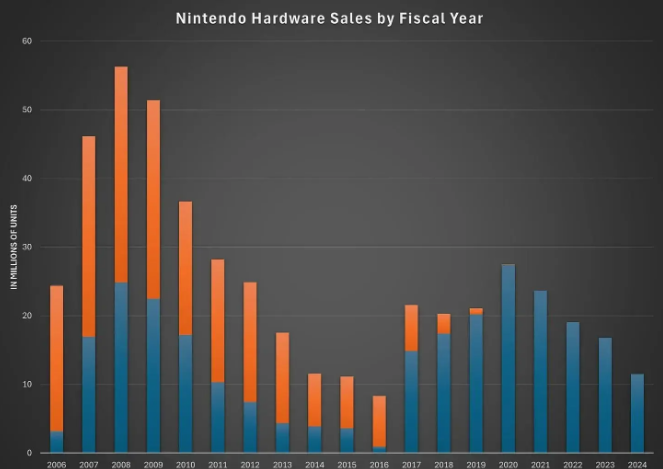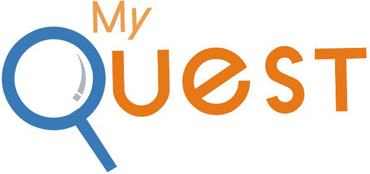
Nintendo Launches Switch 2 Amid High Expectations for Record-Breaking Sales
The initial high demand for Nintendo’s new Switch 2 console is demonstrated by sold-out pre-orders and a lot of hype.
Nintendo wants to replicate what Apple used to be renowned for: lengthy lineups at retail establishments on the day the iPhone was released. The Switch 2 may replace it when it goes on sale globally on Thursday, even though that level of momentum hasn’t been witnessed for a tech product in years.
There is no assurance, though, that customers will leave with a Switch 2, Nintendo’s first new system in eight years and the replacement for the wildly popular Switch, which is still in short supply due to high pre-orders in the US and other major markets.
“Over the next few weeks or possibly months, consumers should be aware that availability will be highly limited worldwide. Buy a Switch now if you can, as prices may increase later owing to the unstable US tariff scenario, said Serkan Toto, CEO of Tokyo-based consulting firm Kantan Games.
Nintendo’s next-generation game console is essential to the company’s operations and the general health of the video game console market, therefore the Switch 2’s release coincides with a pivotal moment in the company’s history. During the COVID-19 epidemic, when many were cooped up at home and firms like Nintendo saw dizzying success with the first Switch, the video game industry flourished. However, now that things are getting back to normal, Nintendo is under pressure to make its new platform popular.
A few audacious choices
Perhaps Nintendo’s greatest asset is the devoted following it has amassed in recent years, particularly in the US, as a result of the Switch’s extraordinary success—150 million systems have been sold globally since its 2017 launch. With the Switch alone bringing in $100 billion in sales for one of the oldest and most reputable video game companies in the world, the Kyoto-based company has become extremely wealthy as a result of its success.
Nintendo became an entertainment conglomerate during the Switch era by branching out into new industries like theme parks, motion pictures, and subscription services. This change in strategy places the business outside of the typical gaming market and into more Disney-related territory.
Instead of unveiling the Switch 2 in the autumn, when most significant tech releases take place, Nintendo is doing so in the middle of the year. To take advantage of the time when children are not in school, the corporation decided to release it in the summer. This emphasises how crucial families and children are to a device like the Switch 2. Historically, Nintendo has promoted their games to appeal to a wide range of users, particularly casual players. This strategy has proven effective in differentiating Nintendo from its main rivals, Microsoft and Sony, who focus more on core and hardcore gamers.
Nintendo has made daring choices that could affect the company’s destiny as it ushers in a new generation with the Switch 2. Players may “switch” between handheld and home console modes on the Switch 2, which is still a hybrid system with a built-in screen and TV port. The Switch 2 doesn’t appear all that different from its predecessor. Considering Nintendo’s history of experimenting with drastically different system designs with each generation, this continuity is noteworthy. The Switch 2 thus represents a shift from the business’s customary strategy for hardware innovation.
With a cutting-edge proprietary CPU created by Nvidia that supports AI processing, the Switch 2 is also more potent. On compatible TVs, the dock can output up to 4K, while the device’s 8-inch screen offers a crisper 1080p image. The Joy-Con controllers that can be detached are back, but they’ve changed in size and functionality. One notable feature is the included optical sensor, which, when the controller is positioned on a table or in a person’s lap, enables it to operate similarly to a computer mouse. This makes it perfect for games like Metroid and Fortnite.
Comfort over danger
For investors, Nintendo has profited from the success of the Switch not just by increasing its cash reserves but also by demonstrating the company’s capacity to produce a popular product that appeals to a wide audience. Through the selling of games and other services, the Switch has produced a consistent flow of revenue. It serves more as a platform in many respects, much like Apple’s iPhone does. Nintendo may have adopted a more conservative strategy with the Switch 2 for this reason.
Nintendo is obviously counting on the success of a well-established property with Mario Kart World, a Switch 2 launch release. Mario Kart 8 Deluxe, the previous installment, sold more than 68 million copies on the original Switch. Additionally, the business is under pressure to break the so-called “post-hit jinx,” which is a persistent problem for Nintendo in maintaining momentum following significant hardware achievements.
With the Switch 2, Nintendo seems to have opted for familiarity over risk. This implies that the business has at last decided on the best hybrid console form factor and intends to stick with it while enhancing and perfecting the user experience. Nevertheless, the Switch 2 is more expensive than its $300 predecessor, costing $449. In addition to charging more for its first-party games—Mario Kart World costs $80—Nintew is making a big leap for a console.
Toto stated, “I think this won’t be a big issue if Nintendo can keep the price stable over time, as consumers seem to be generally OK with the price point.” “We should anticipate a successful launch because there is a lot of excitement surrounding it in Nintendo’s major markets, especially the US, Europe, and Japan.”
Preorders are sold out
The excitement around the original Switch has been overshadowed by the positive early reception of the Switch 2. In Japan, where the firm is based, more than 2.2 million individuals have pre-ordered the Switch 2 through Nintendo’s own online store alone, despite the fact that the company has not revealed pre-order data for the US market. Toto refers to the number of pre-orders for Japan as “an incredible number.”
Although the US has always been Nintendo’s largest market, the original Switch was especially well-received in Japan. By lowering the price of the Switch 2, Nintendo hopes to keep that momentum going in its native nation. As an alternative to the expensive model, the international model is marketed as a special interest device in Japan. In the future, that version will probably be less prevalent in Japan, Toto stated.
Nintendo is selling two Switch 2 models in Japan: a Japanese-only model that costs ¥49,980 (about $350) and a multilingual version that costs ¥69,980 (roughly $500) and can only be purchased through the My Nintendo Store. As part of its local push for the Switch 2, Nintendo is also giving Japanese merchants larger profits.
Using Switch 2 for banking
Nintendo, which has a long history of developing enduring characters and narrating their tales in its games, is releasing its most significant product in years at what might be the worst possible moment. This is happening at the same time as US President Donald Trump is enacting a number of tariffs on goods from other countries, with a focus on Asia, which is home to many tech supply networks. Nintendo is therefore more susceptible to Trump’s tariffs. The business has raised the cost of Switch 2 accessories like controllers and carrying cases, but it hasn’t altered the selling price of the Switch 2 in the US.
“I believe Nintendo can sell 20 million units of the new device in the first year if there is sufficient supply. Nintendo will have to persuade as many people as possible to upgrade later in the life cycle after the initial wave of early adopters and die-hard supporters. “Toto said.”
Nintendo is dominating the world and its stock is at an all-time high because the Switch 2 is their most expensive console. The Switch 2 is Nintendo’s riskiest product to date, despite the fact that some people would view it as just an upgraded version of the original Switch. Since a lot is on the line and its outcome will ultimately determine whether Nintendo can continue on its path to becoming a more comprehensive entertainment company, the firm needs it to be a huge success. After all, Nintendo has no other significant product lines to rely on, unlike Microsoft or Sony.


